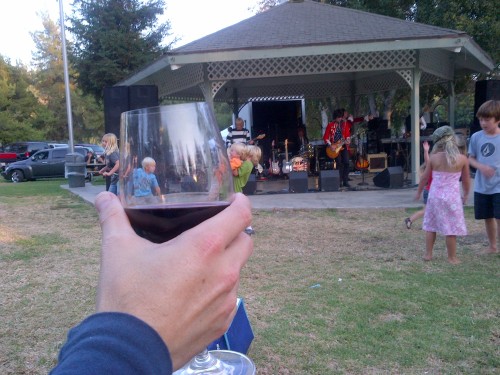I confess I have the dread disease that requires me to log every mile of every swim, bike and run, and every minute of exercise. If I don’t document it in at least three places, it didn’t happen, much like if a tree falls in the forest and no one is there to hear it. I track my runs and bike rides with a Garmin and/or with MapMyRUN, then record them on MapMyRUN, on my computer spreadsheet, and on my paper marathon training schedule. That’s normal, right? 😉 Just nod and back away slowly, and maybe you won’t catch this dread disease.
The fact is I find the data fascinating and it all helps me keep on track for my triathlon and marathon training. I’ve got an Olympic distance triathlon coming up in two weeks (!!) and the marathon in 10 weeks (!!!) I’ve been following the Run Less, Run Faster beginner’s marathon training plan. It calls for three runs per week (speed work, tempo, and long run) plus at least two cross-training workouts. For cross-training of course I do swimming and biking, a natural fit for the triathlon training. I also throw in some strength training. All that means that I exercise an average of six days per week for an average of six to six-and-a-half hours total. (Now I know that sounds like a lot to someone training for her first 5K, and like nothing to someone training for an Ironman. I don’t compare myself to anyone else (although if you want to leave a comment to tell me how much you’re training for your 70.3 or 140.6, I’d be curious to know the answer!))
For me the week generally looks like this:
Sunday: 60-minute bike ride or 30-minute ocean swim
Monday: rest day, possible 30-minute strength training
Tuesday: 60-minute speed workout, generally 6 miles including warm-up and cool-down
Wednesday: 30-minute swim or 40-minute bike ride, plus 20-30 minutes strength training
Thursday: 60-minute tempo run, generally 6-7 miles (this will be going up as the plan proceeds)
Friday: 30-minute bike ride plus 30 minutes of strength training; optional rest day or only strength training
Saturday: 120-minute long run (soon to be more as I head into new territory with 14+ mile runs!)
It ends up being three runs, two bike rides, one or two swims, and an average of two strength training sessions. By the numbers for August:
Swim miles (a swim mile being 1500 km): 5.25
Bike miles: 101.3 (full disclosure: I count 30 minutes on the spin bike as 10 miles)
Run miles: 100.59 (woo hoo, broke my first 100!)
Number of strength training workouts: 8, for a total of 3 hours 25 minutes
My handy computer spreadsheet shows me a pie chart that compares the ratio of swim to bike to run to weights, all based on minutes. It consistently stays at about 58 percent running, 18 percent biking, 14 percent swimming and 10 percent strength training.
Do you log all of your workouts? In more than one place?! Please confess that I’m not the only one.
What are you training for if anything and what does your mileage and workout time look like recently?
















